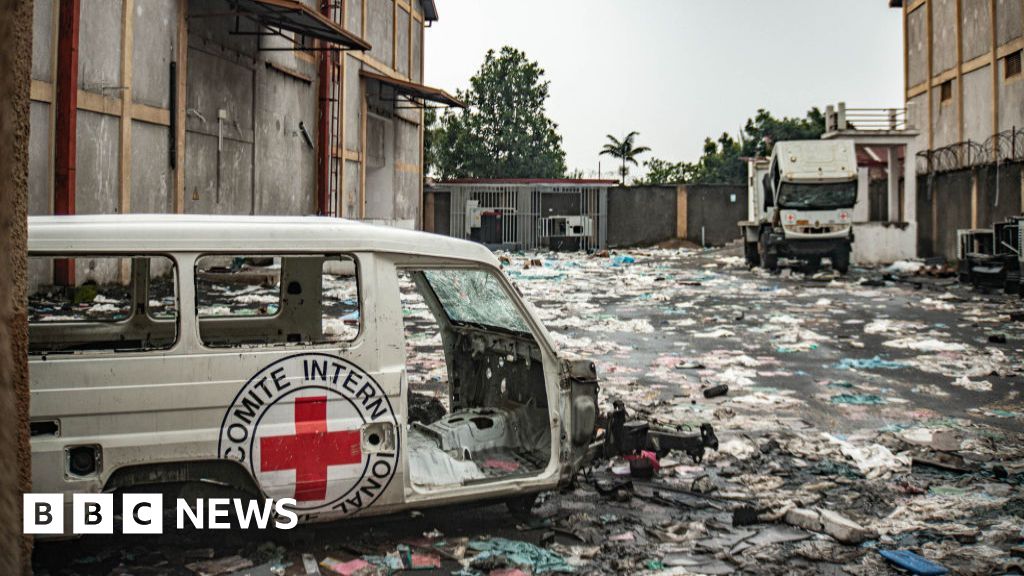 |
|
The eastern Congolese city of Goma, a metropolis of nearly two million people, finds itself under the unexpected control of the M23 rebel group. The swift takeover, following a lightning advance, has left the city reeling from the aftermath of intense fighting. The BBC's report paints a stark picture of a city attempting to function under a new, and unwelcome, administration. While the surface might appear relatively calm, with citizens going about their daily routines, a closer look reveals a city gripped by fear and uncertainty. The presence of heavily armed M23 fighters at checkpoints and strategic locations serves as a constant reminder of the changed power dynamic. The casual manner in which the rebels conduct themselves, seemingly unopposed, highlights the complete collapse of the Congolese army's authority in the region. Eyewitness accounts from the BBC team detail the scenes of devastation. The hospitals, already overstretched, are overwhelmed with casualties from the conflict, struggling to cope with hundreds of injured civilians suffering from gunshot wounds, shrapnel injuries and other trauma. The scale of human suffering is palpable, with doctors describing heartbreaking scenes of patients succumbing to their injuries even after receiving medical attention.
The human cost of the conflict extends beyond the immediate physical injuries. The UN and Congolese government have reported at least 700 deaths and close to 3,000 injuries during the fighting. Beyond these figures, the impact of the conflict on the civilian population is profound. The article highlights the psychological trauma experienced by residents who live with constant fear of further violence and uncertainty. Many individuals have fled their homes, seeking refuge in neighboring countries, leaving behind their businesses and livelihoods. The disruption to trade and economic activity is significant, with many shops and banks remaining closed. The lack of access to essential goods and services adds another layer to the humanitarian crisis unfolding in Goma.
The underlying causes of the conflict are complex and multifaceted. While the M23 claims to be fighting for minority rights, the Congolese government accuses the group of being backed by Rwanda and seeking control of the region's valuable mineral resources. The presence of abandoned Congolese military vehicles and equipment suggests a complete rout of the government forces, a sign of either a collapse of morale or perhaps even a more sinister collaboration. The accusation of Rwandan backing for the M23 is a serious allegation, raising concerns about regional instability and potential wider conflict. Rwanda’s initial denial of involvement has evolved into a more defensive stance, highlighting the sensitive geopolitical dynamics at play. The reports of sexual violence being used as a weapon of war, confirmed by both the UN and medical professionals in Goma, add another disturbing dimension to the conflict. This pattern of violence against women further underscores the brutality and disregard for human rights displayed by the warring factions.
The situation in Goma serves as a chilling microcosm of the broader instability in eastern DR Congo. The M23's advance, and the complete lack of Congolese resistance, raises serious questions about the effectiveness of the Congolese army and the role of the UN peacekeeping mission (Monusco). The presence of abandoned military equipment near the Monusco base suggests either a failure to adequately protect civilians or a deeper, more concerning, complicity. The M23’s ambitions extend beyond Goma, with reports suggesting a southward push towards Bukavu and an ultimate goal of reaching the capital city Kinshasa. The potential for further escalation of violence and displacement remains very real. The narrative of the article reveals not just the immediate impacts of the conflict, but also the long-term consequences and the precarious security environment in which the people of Goma and the wider eastern DRC are forced to exist. The future remains uncertain, marked by fear, instability, and the deeply troubling possibility of further violence and human suffering.
The article concludes with a somber reflection on the situation in Goma and the potential for further escalation of the conflict. The M23’s apparent success in capturing Goma sends a worrying signal, highlighting the significant challenges facing the Congolese government and the international community in addressing the root causes of the conflict and bringing about lasting peace. The complete displacement of Congolese authorities, coupled with the overwhelming presence of M23, demonstrates the fragility of the situation. The lack of security, economic disruption, and the continuing threat of violence cast a long shadow over the future of Goma and the wider region. The plight of the people of Goma serves as a stark reminder of the urgent need for international intervention and a concerted effort to address the underlying political and economic factors that fuel conflict in eastern DR Congo.
Source: Goma under the M23: BBC visits DR Congo city under rebel control
